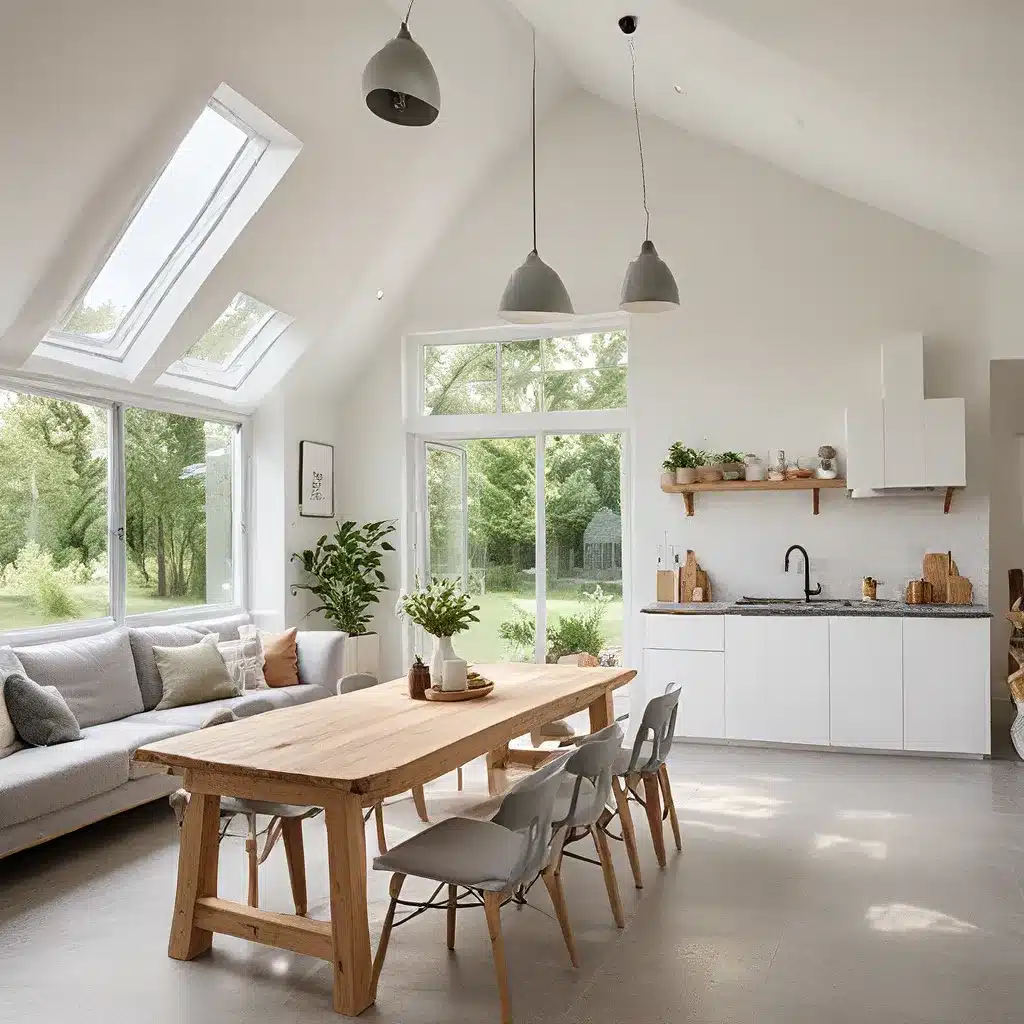
The Circular Economy Puzzle: Revamping Your Kitchen on a Budget
I love the circular economy – if nothing else, I find it an enjoyable puzzle to solve and a way to save some cash. But most of all, it’s the somewhat cheesy joy I get from looking at these reclaimed gems, knowing that I found them, stopped them from going to waste, and have created a new valuable life for them in my world.
In this article, I’ll share my journey of refitting a derelict 1980s kitchen almost entirely with reclaimed materials and share the challenges and the charms of this approach. As a homeowner in Aberdeen, UK, I’ve always been passionate about finding sustainable solutions for home improvement projects, and this kitchen renovation was no exception.
The Dream Kitchen and the Reality Check
I started by using a popular online kitchen design tool to plan my ideal kitchen in the limited space I had. They priced this up at over £4,000, and that was just for the kitchen units and worktops, not the floor and lighting, etc. As a budget-conscious homeowner, I knew I needed to find a more affordable and eco-friendly solution.
That’s when I stumbled upon the concept of the circular economy and the idea of using reclaimed materials for my kitchen renovation. The more I researched, the more excited I became about the prospect of giving new life to old materials and reducing the environmental impact of my project.
Embracing the Circular Economy
The circular economy is a model that focuses on keeping resources in use for as long as possible, extracting the maximum value from them while in use, and then recovering and regenerating products and materials at the end of each service life. This approach can bring significant benefits, including cost savings, reduced environmental impact, and the creation of new value from waste.
As I delved deeper into the world of reclaimed materials, I was amazed by the variety of options available. From salvaged wood and vintage tiles to repurposed appliances and industrial-chic lighting, the possibilities were endless. I knew this was the path I wanted to take for my kitchen renovation.
The Challenges of Embracing the Circular Economy
Of course, embarking on a reclaimed materials project wasn’t without its challenges. Sourcing the right materials, ensuring they fit together seamlessly, and navigating the logistics of transportation and installation required a lot of time and effort.
One of the biggest hurdles was finding a reliable source of reclaimed materials that met my specific needs. I scoured local salvage yards, online marketplaces, and even attended estate sales to uncover hidden gems. It was a bit like a treasure hunt, but the thrill of the chase made it all the more rewarding.
The Charms of Reclaimed Materials
As I began to assemble my reclaimed kitchen, I started to see the true beauty in these upcycled materials. The weathered wood boards had a unique character that no mass-produced unit could ever replicate, and the vintage tiles added a touch of personality and history to the space.
One of my favorite finds was an old oven that I managed to refurbish and integrate into the overall design. The cost savings were significant, and the satisfaction of giving this once-forgotten appliance a new lease on life was priceless.
The Importance of Sustainability in Home Renovations
As I reflect on my reclaimed kitchen project, I’m struck by the importance of sustainability in home renovations. The construction and renovation industry is a major contributor to global waste and greenhouse gas emissions, and as homeowners, we have a responsibility to seek out more eco-friendly solutions.
By embracing the circular economy and using reclaimed materials, we can not only save money but also reduce our environmental footprint. The benefits are clear: cash savings, reduced waste, and the satisfaction of giving new life to old materials.
The Journey Continues
As I put the finishing touches on my reclaimed kitchen, I can’t help but feel a sense of pride and accomplishment. The journey wasn’t always easy, but the end result is a space that is truly unique, sustainable, and a reflection of my personal style.
I encourage other homeowners to embrace the circular economy and explore the world of reclaimed materials for their own home renovation projects. Who knows, you might just uncover a hidden gem and create something truly special in the process.
Expanding the Eco-Friendly Approach
Of course, the journey doesn’t stop at the kitchen. Whole-home renovations present an even greater opportunity to embrace sustainability and reduce our environmental impact. From repurposing old materials to incorporating energy-efficient technologies, there are countless ways to make our homes more eco-friendly.
As I look to the future, I’m excited to continue exploring new sustainable solutions for my home. Solar panels, water-saving fixtures, and insulation upgrades are just a few of the areas I’m eager to investigate further. It’s an ongoing process, but one that I’m passionate about and committed to.
The Joy of Sustainable Renovations
Ultimately, the joy I’ve experienced throughout this reclaimed kitchen project has been immeasurable. It’s not just about the cost savings or the environmental impact – it’s about the sense of accomplishment and the satisfaction of creating something truly unique and meaningful.
As I sit in my revamped kitchen, surrounded by the reclaimed materials that have become a part of my home’s story, I can’t help but feel a deep sense of gratitude and connection. This is more than just a renovation; it’s a celebration of sustainability, a testament to the power of resourcefulness, and a reflection of my own values and priorities.
So, if you’re considering a home renovation project, I encourage you to embrace the circular economy, explore the world of reclaimed materials, and embark on a journey that not only transforms your home but also leaves a positive impact on the environment. Who knows, you might just uncover your own hidden gems and discover the endless joys of sustainable living.
















